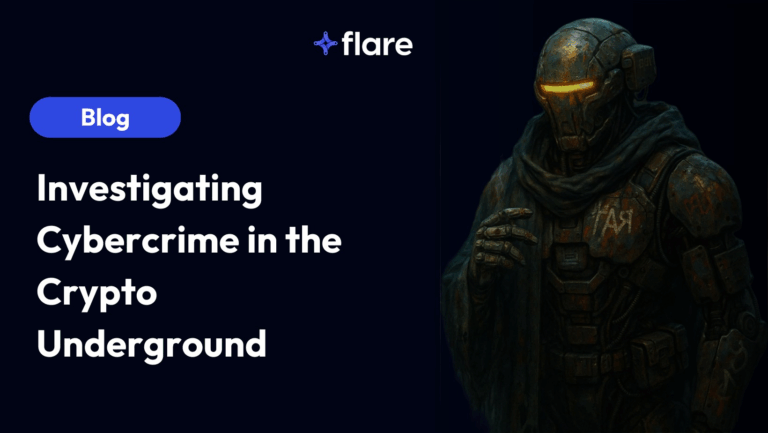
CTI represents a proactive and strategic approach to cybersecurity, providing organizations with the insights needed to identify and combat potential cyber threats. These CTI frameworks are evolving, adapting to the changing threat landscape and leveraging cutting-edge technologies to enhance their effectiveness.
Understanding the Evolution of Cyber Threat Intelligence Frameworks
The digital landscape is ever-evolving, with organizations constantly vying to protect their assets from a ceaseless stream of cyber threats. Amid this, cyber threat intelligence (CTI) has emerged as an indispensable defensive tool.
CTI frameworks, in particular, are increasingly gaining traction for their role in equipping businesses with the knowledge and strategies required to anticipate and counter cyber attacks. But to truly appreciate the importance of the latest CTI frameworks, it’s crucial to understand their evolution.
A Brief History of Cyber Threat Intelligence
The genesis of CTI frameworks can be traced back to the dawn of the internet era, where the basic security measures were reactive in nature, focusing largely on detecting and mitigating threats post-breach.
Over time, as cyber threats proliferated and evolved in sophistication, reactive measures proved inadequate. This led to the advent of CTI, offering a proactive, strategic approach that involved:
- Identifying
- Understanding
- Preparing for potential threats before they could exploit vulnerabilities
Early CTI frameworks were relatively rudimentary, often constrained by limited data sources and manual analysis. As technological advancements made it possible to amass large volumes of data from diverse sources, the frameworks started incorporating elements of big data analytics and machine learning. This shift allowed for the automated collection and analysis of threat intelligence, enabling security teams to more efficiently sift through vast quantities of data to pinpoint potential threats.
In the last few years, CTI frameworks have further matured, buoyed by advancements in AI, predictive analytics, and cloud computing. Today’s frameworks can leverage these technologies to:
- Provide real-time threat intelligence
- Detect patterns
- Predict potential future threats
to fortify organizational defenses like never before.
In 2023, the focus is on creating robust CTI frameworks that are increasingly automated, real-time, predictive, and integrated.
The integration of CTI with other areas of security, such as risk management and incident response, is paramount, paving the way for a more unified and comprehensive approach to cybersecurity.
Key Components of Leading CTI Frameworks
Organizations are leveraging sophisticated CTI frameworks to safeguard their digital assets effectively. Driven by cutting-edge technology and a proactive approach, these CTI frameworks have several key components that differentiate them from their predecessors and equip businesses with a robust defensive mechanism. Let’s explore these components in detail:
Advanced Threat Intelligence Gathering
CTI frameworks harness the power of AI to automate the process of threat intelligence gathering. They collect data from a multitude of sources to identify potential threats and indicators of compromise (IoCs), including:
- System logs
- Cloud environments
- IoT devices
- External threat intelligence feeds
Real-Time Threat Analysis
The leading CTI frameworks emphasize real-time analysis of collected data. With the aid of machine learning algorithms, they can sift through vast quantities of data, detect patterns, and flag potential threats instantly, freeing up resources for threat analysts to respond swiftly to emerging threats.
Predictive Threat Intelligence
The frameworks use predictive analytics to forecast likely future threats based on current trends and historical data. This component provides organizations a forward-looking view of their threat landscape, enabling them to prepare for and possibly prevent future cyber attacks.
Contextual Threat Evaluation
Contextual analysis is a critical aspect of contemporary CTI frameworks. They assess the relevance of detected threats in relation to the specific context of an organization. This includes factors such as the nature of an organization’s data, its digital infrastructure, industry, and even geopolitical factors.
Integrated Cyber Risk Management
CTI frameworks are no longer standalone entities but integrate seamlessly with broader cyber risk management and incident response strategies. This alignment ensures a comprehensive, coordinated approach to cybersecurity, reducing potential blind spots and enhancing the effectiveness of defensive measures.
Dynamic Adaptability
One of the defining features of leading CTI frameworks is their dynamic adaptability. These frameworks evolve to stay ahead of ever-changing cyber threats. Regular updates, driven by machine learning and AI, enable them to keep up with emerging cyber threats, ensuring that businesses stay one step ahead of potential attackers.
Scalability
Modern CTI frameworks are designed to scale as per the needs of an organization. Regardless of a company’s size, these frameworks offer robust and effective threat analysis capabilities, ensuring that cybersecurity measures remain effective as the organization grows.
These components come together to form a well-rounded, efficient CTI framework that not only detects and neutralizes threats but also anticipates them.
The power of such frameworks lies in their comprehensive approach, leaving no stone unturned in the pursuit of comprehensive cybersecurity.
The Role of Advanced Technologies in Enhancing CTI Frameworks
In the evolving landscape of cybersecurity, advanced technologies play a pivotal role in the enhancement of CTI frameworks. Leveraging technology has become an imperative in 2023, driving efficiency, precision, and proactive threat mitigation. Here’s how some of these technologies are reshaping the capabilities of CTI frameworks:
AI and Machine Learning
These technologies have revolutionized the way we approach threat intelligence. AI helps automate the process of data collection, parsing through vast quantities of data from various sources to identify potential threats. ML algorithms, on the other hand, learn from the data, helping to detect patterns and anomalies that indicate potential cyber threats. This ability to ‘learn’ from past incidents enables the CTI framework to predict and prepare for possible future attacks.
This is greatly beneficial in aiding threat analysts, so that they aren’t overwhelmed by manually reviewing large amounts of information.
Big Data Analytics
The magnitude of data generated by digital activities is enormous. Big data analytics technology allows CTI frameworks to process this data effectively, providing insightful analyses that can identify subtle patterns and correlations. These insights enable organizations to anticipate threats and adopt proactive defense strategies.
Cloud Computing
With the flexibility and scalability provided by cloud computing, CTI frameworks can efficiently manage large datasets and deploy resource-intensive tasks. This technology also facilitates the integration of CTI frameworks with other cloud-based systems, allowing for a seamless flow of intelligence across various security apparatuses.
Natural Language Processing (NLP)
NLP has a unique role in enhancing CTI frameworks. It aids in analyzing unstructured data, such as social media posts or blogs, to extract relevant threat intelligence. NLP can identify potential threats concealed in text data, broadening the scope of threat detection.
Internet of Things (IoT)
As IoT devices permeate many industries, they have become potential entry points for cyber threats. Advanced CTI frameworks are incorporating IoT-focused threat intelligence to identify and mitigate threats specific to these devices, enhancing overall cybersecurity.
Automation
Automation technology is a core enabler in modern CTI frameworks. It aids in automating repetitive tasks such as data collection and preliminary analysis, speeding up the threat intelligence process and allowing security teams to focus on strategic decision-making.
By integrating these advanced technologies, CTI frameworks are set to deliver more sophisticated, efficient, and proactive cyber threat intelligence. The successful amalgamation of technology and cybersecurity paves the way for a safer and more secure digital ecosystem, empowering organizations to keep their digital assets secure while staying ahead of emerging threats.
Implementing and Benefiting from CTI Frameworks in Your Organization
Implementing a robust CTI framework has become an absolute necessity for all organizations, regardless of their size or industry.
Steps to Implement CTI Frameworks
These are the steps to implement advanced CTI frameworks and the benefits that come along with their adoption:
1. Assess Your Current Security Posture
Begin by examining your existing cybersecurity infrastructure. Identify any gaps or weaknesses, and understand where and how a CTI framework can provide enhancements.
2. Choose a Suitable CTI Framework
Different CTI frameworks come with varying features and strengths. Choose a framework that aligns with your organization’s unique needs, security objectives, and technological capabilities.
3. Integrate the Framework
Implement the chosen CTI framework into your existing cybersecurity structure. This step may require technical expertise to ensure seamless integration and interoperability with your existing systems.
4. Train Your Security Team
Equip your cybersecurity team with the skills and knowledge to effectively operate the new CTI framework. This might involve technical training sessions or workshops.
5. Continuously Update and Review
Cyber threats are continually evolving, and so should your CTI framework. Regular updates and reviews are necessary to ensure that your threat intelligence remains relevant and effective.
Benefits of Implementing CTI Frameworks
Enhanced Threat Visibility
A CTI framework provides a comprehensive view of potential cyber threats, offering insights that extend beyond your organizational boundaries. This visibility enables you to detect and address threats proactively rather than reactively.
Efficient Resource Utilization
By helping you prioritize threats based on their severity and potential impact, a CTI framework ensures your security resources are used most effectively.
Improved Decision Making
The intelligence provided by CTI frameworks informs strategic decisions, helping you design a more secure digital architecture and adopt effective threat mitigation strategies.
Reduced Response Time
With real-time threat intelligence, CTI frameworks enable faster detection of threats, allowing for a quicker and more effective response.
Regulatory Compliance
Many CTI frameworks incorporate regulatory compliance features, aiding organizations in meeting cybersecurity regulations and standards.
Cost Efficiency
By preventing successful cyber attacks, a CTI framework can save your organization the substantial costs associated with data breaches and system downtimes.
Implementing an advanced CTI framework is a strategic move that brings about numerous benefits that take in the adaptive nature of threats today and the sophistication of CTI tools to mitigate and prevent those threats.
CTI with Flare
Aiming for a proactive stance in cybersecurity, these advanced CTI frameworks integrate state-of-the-art technologies, ensuring real-time threat detection and predictive capabilities. Key components like advanced threat intelligence gathering, real-time threat analysis, predictive threat intelligence, and dynamic adaptability fortify these frameworks, making them an essential asset in any cybersecurity strategy.
Flare’s developing alongside emerging technologies to ensure that customers stay ahead of threat actors. Our AI Powered Assistant enables CTI teams to:
- Translate & contextualize dark web & illicit Telegram posts in seconds
- Automatically takedown lookalike domains and public GitHub repository
- Analyze a threat actor’s complete post history and create a detailed summary
Sign up for a free trial to learn how we can support your CTI team.





